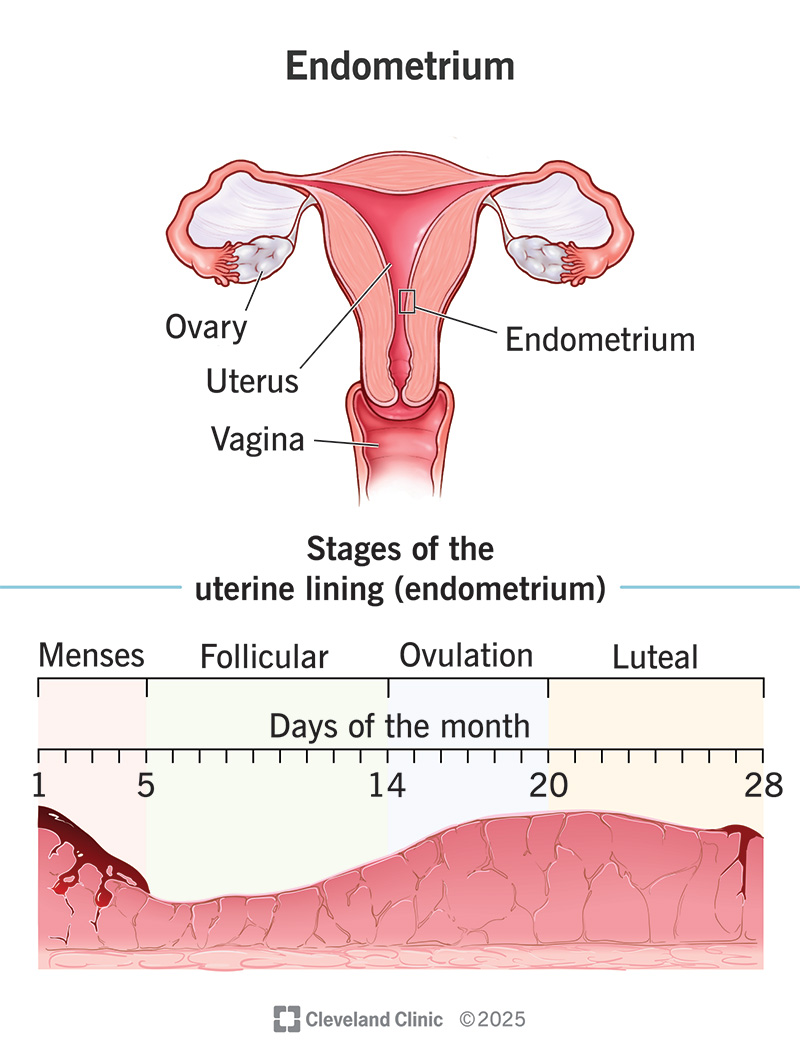The endometrium (uterine lining) is essential for reproduction. It’s what a fertilized egg implants into. It’s also what sheds during your period. Certain health conditions involve your endometrium, like endometriosis and endometrial hyperplasia.
Advertisement
Cleveland Clinic is a non-profit academic medical center. Advertising on our site helps support our mission. We do not endorse non-Cleveland Clinic products or services. Policy

The endometrium is a mucous membrane that lines the inside of your uterus. It’s the tissue that sheds when you have your period. And it’s essential for maintaining a pregnancy.
Advertisement
Cleveland Clinic is a non-profit academic medical center. Advertising on our site helps support our mission. We do not endorse non-Cleveland Clinic products or services. Policy
The endometrium constantly changes and regenerates during your menstrual cycle. Researchers estimate that the endometrium regenerates about 400 times during the years that you menstruate.
The endometrium is essential for reproduction. It has three main functions:
Progesterone and estradiol are the main hormones that control the growth and shedding of your endometrium. The amount of these two hormones changes in a specific way throughout your menstrual cycle. Your ovaries make progesterone and estradiol.
Your endometrium has two main layers:
Your endometrium contains:
Advertisement
When you have your period, the fluid is made up of endometrial cells and blood from blood vessels in your uterus.
The thickness of your endometrium varies throughout your menstrual cycle. For a healthy reproductive endometrium, the thickness is typically:
After menopause, your endometrium is typically less than 5 mm thick. Your healthcare provider can check the thickness of your endometrium with a transvaginal ultrasound or an MRI.
When your endometrium is too thick, it’s called endometrial hyperplasia. It’s a treatable condition that can cause abnormal menstrual bleeding and infertility. Untreated atypical endometrial hyperplasia can become cancerous.
Conditions that affect or involve your endometrium include:
Most of these conditions are treatable or manageable with medication or surgery.
Common symptoms that may signal there’s an issue with your endometrium include:
It’s important to see a gynecologist if you’re having any of these symptoms. While these symptoms may be your usual, they’re not medically normal. Know that you don’t have to live with the discomfort that these symptoms can cause.
The endometrium is a dynamic tissue that’s key to your reproductive health. Any abnormalities with your period could be a sign that there’s an issue with your endometrium. It’s always a good idea to see your healthcare provider if you’re having period issues. They can recommend tests to check the health of your endometrium.
Advertisement
From routine pelvic exams to high-risk pregnancies, Cleveland Clinic’s Ob/Gyns are here for you at any point in life.

Last reviewed on 07/29/2025.
Learn more about the Health Library and our editorial process.